-
 Bitcoin
Bitcoin $115100
1.27% -
 Ethereum
Ethereum $3675
2.71% -
 XRP
XRP $2.995
1.45% -
 Tether USDt
Tether USDt $1.000
0.02% -
 BNB
BNB $769.8
2.64% -
 Solana
Solana $168.0
3.25% -
 USDC
USDC $0.9999
-0.01% -
 TRON
TRON $0.3371
1.48% -
 Dogecoin
Dogecoin $0.2051
3.36% -
 Cardano
Cardano $0.7394
2.30% -
 Hyperliquid
Hyperliquid $38.15
0.42% -
 Stellar
Stellar $0.3966
-0.36% -
 Sui
Sui $3.486
2.93% -
 Chainlink
Chainlink $16.72
2.52% -
 Bitcoin Cash
Bitcoin Cash $568.0
4.36% -
 Hedera
Hedera $0.2440
2.59% -
 Ethena USDe
Ethena USDe $1.001
0.04% -
 Avalanche
Avalanche $22.16
2.06% -
 Litecoin
Litecoin $119.1
-0.73% -
 UNUS SED LEO
UNUS SED LEO $8.991
0.04% -
 Toncoin
Toncoin $3.232
-0.39% -
 Shiba Inu
Shiba Inu $0.00001233
2.82% -
 Uniswap
Uniswap $9.717
2.53% -
 Polkadot
Polkadot $3.664
1.85% -
 Dai
Dai $1.000
0.01% -
 Monero
Monero $281.2
-3.89% -
 Bitget Token
Bitget Token $4.350
1.55% -
 Cronos
Cronos $0.1428
5.07% -
 Pepe
Pepe $0.00001050
3.68% -
 Aave
Aave $262.3
3.54%
How to stake tokens in Trust Wallet? How long does it take for the income to be credited?
Stake TRX, XTZ, ATOM, and VET in Trust Wallet for passive income; rewards credited every 24 hours to 5 days, depending on the cryptocurrency.
May 04, 2025 at 12:15 pm

Staking tokens has become a popular way for cryptocurrency holders to earn passive income. Trust Wallet, a versatile and user-friendly mobile wallet, allows users to stake various cryptocurrencies directly from their app. In this article, we will guide you through the process of staking tokens in Trust Wallet and explain how long it typically takes for the staking rewards to be credited to your account.
Understanding Staking in Trust Wallet
Staking is the process of holding funds in a cryptocurrency wallet to support the operations of a blockchain network. In return, stakers are rewarded with additional tokens. Trust Wallet supports staking for several cryptocurrencies, including TRON (TRX), Tezos (XTZ), Cosmos (ATOM), and VeChain (VET). Each of these cryptocurrencies has its own staking mechanism and reward system.
Preparing to Stake in Trust Wallet
Before you can start staking, you need to ensure that your Trust Wallet app is up to date and that you have the cryptocurrency you wish to stake in your wallet. Here are the steps to prepare for staking:
- Download and Update Trust Wallet: Make sure you have the latest version of Trust Wallet installed on your mobile device. You can download it from the App Store or Google Play Store.
- Add the Cryptocurrency: If you haven’t already, add the cryptocurrency you want to stake to your Trust Wallet. You can do this by tapping on the "+" icon at the top right corner of the wallet screen, searching for the cryptocurrency, and following the prompts to add it.
- Fund Your Wallet: Transfer the cryptocurrency you want to stake into your Trust Wallet. You can do this by sending the tokens from another wallet or exchange to the address provided by Trust Wallet.
Staking TRON (TRX) in Trust Wallet
TRON (TRX) is one of the cryptocurrencies that can be staked directly within Trust Wallet. Here’s how to stake TRX:
- Open Trust Wallet: Launch the Trust Wallet app on your mobile device.
- Navigate to TRX: Tap on the TRON (TRX) icon on the main screen to open your TRX wallet.
- Access Staking: Tap on the "Stake" button within the TRX wallet.
- Select a Validator: You will be presented with a list of validators. Choose one based on their performance and fees. Validators with higher voting power and lower fees are generally preferred.
- Enter the Amount: Input the amount of TRX you wish to stake. Make sure you leave enough TRX in your wallet to cover transaction fees.
- Confirm the Transaction: Review the details of your staking transaction and confirm it. You may be prompted to enter your wallet password or use biometric authentication.
- Wait for Confirmation: The transaction will be processed on the TRON network, and you will receive a confirmation once it is complete.
Staking Tezos (XTZ) in Trust Wallet
Tezos (XTZ) is another cryptocurrency that can be staked in Trust Wallet. Here’s how to stake XTZ:
- Open Trust Wallet: Launch the Trust Wallet app on your mobile device.
- Navigate to XTZ: Tap on the Tezos (XTZ) icon on the main screen to open your XTZ wallet.
- Access Staking: Tap on the "Stake" button within the XTZ wallet.
- Select a Baker: You will be presented with a list of bakers. Choose one based on their performance and fees. Bakers with higher baking power and lower fees are generally preferred.
- Enter the Amount: Input the amount of XTZ you wish to stake. Make sure you leave enough XTZ in your wallet to cover transaction fees.
- Confirm the Transaction: Review the details of your staking transaction and confirm it. You may be prompted to enter your wallet password or use biometric authentication.
- Wait for Confirmation: The transaction will be processed on the Tezos network, and you will receive a confirmation once it is complete.
Staking Cosmos (ATOM) in Trust Wallet
Cosmos (ATOM) can also be staked directly within Trust Wallet. Here’s how to stake ATOM:
- Open Trust Wallet: Launch the Trust Wallet app on your mobile device.
- Navigate to ATOM: Tap on the Cosmos (ATOM) icon on the main screen to open your ATOM wallet.
- Access Staking: Tap on the "Stake" button within the ATOM wallet.
- Select a Validator: You will be presented with a list of validators. Choose one based on their performance and fees. Validators with higher voting power and lower fees are generally preferred.
- Enter the Amount: Input the amount of ATOM you wish to stake. Make sure you leave enough ATOM in your wallet to cover transaction fees.
- Confirm the Transaction: Review the details of your staking transaction and confirm it. You may be prompted to enter your wallet password or use biometric authentication.
- Wait for Confirmation: The transaction will be processed on the Cosmos network, and you will receive a confirmation once it is complete.
Staking VeChain (VET) in Trust Wallet
VeChain (VET) is another cryptocurrency that can be staked in Trust Wallet. Here’s how to stake VET:
- Open Trust Wallet: Launch the Trust Wallet app on your mobile device.
- Navigate to VET: Tap on the VeChain (VET) icon on the main screen to open your VET wallet.
- Access Staking: Tap on the "Stake" button within the VET wallet.
- Select a Node: You will be presented with a list of nodes. Choose one based on their performance and fees. Nodes with higher voting power and lower fees are generally preferred.
- Enter the Amount: Input the amount of VET you wish to stake. Make sure you leave enough VET in your wallet to cover transaction fees.
- Confirm the Transaction: Review the details of your staking transaction and confirm it. You may be prompted to enter your wallet password or use biometric authentication.
- Wait for Confirmation: The transaction will be processed on the VeChain network, and you will receive a confirmation once it is complete.
How Long Does It Take for Staking Rewards to Be Credited?
The time it takes for staking rewards to be credited to your account can vary depending on the cryptocurrency and the specific staking mechanism. Here’s a breakdown of the typical reward crediting times for the cryptocurrencies supported by Trust Wallet:
- TRON (TRX): TRON staking rewards are typically credited every 24 hours. The exact time can vary based on the validator you choose and the network’s performance.
- Tezos (XTZ): Tezos staking rewards are credited every cycle, which lasts approximately 3 days. The exact timing can vary based on the baker you choose and the network’s performance.
- Cosmos (ATOM): Cosmos staking rewards are credited every epoch, which lasts approximately 5 days. The exact timing can vary based on the validator you choose and the network’s performance.
- VeChain (VET): VeChain staking rewards are credited every 24 hours. The exact time can vary based on the node you choose and the network’s performance.
It’s important to note that these are general timeframes, and actual reward crediting times can vary. Always check the specific details provided by the validator, baker, or node you choose, as well as any updates from the cryptocurrency’s official channels.
Frequently Asked Questions
Q: Can I unstake my tokens at any time?
A: The ability to unstake tokens depends on the specific cryptocurrency and its staking rules. For example, TRON (TRX) allows you to unstake at any time, but you may need to wait for a certain period before you can withdraw your tokens. Tezos (XTZ) has a 36-day unbonding period before you can withdraw your staked tokens. Always check the specific rules for the cryptocurrency you are staking.
Q: Are there any risks associated with staking in Trust Wallet?
A: Yes, there are risks associated with staking. These include the risk of slashing, where you may lose a portion of your staked tokens if the validator, baker, or node you choose misbehaves. Additionally, there is the risk of network downtime or technical issues that could affect your staking rewards. Always research and choose reputable validators, bakers, or nodes to minimize these risks.
Q: Can I stake multiple cryptocurrencies at the same time in Trust Wallet?
A: Yes, you can stake multiple cryptocurrencies at the same time in Trust Wallet. Each cryptocurrency has its own staking interface within the app, allowing you to manage and stake different tokens independently.
Q: How do I track my staking rewards in Trust Wallet?
A: Trust Wallet provides a staking dashboard for each cryptocurrency you are staking. You can access this dashboard by navigating to the specific cryptocurrency’s wallet and tapping on the "Stake" button. The dashboard will show you your current stake, the validator, baker, or node you are using, and your accumulated rewards.
Disclaimer:info@kdj.com
The information provided is not trading advice. kdj.com does not assume any responsibility for any investments made based on the information provided in this article. Cryptocurrencies are highly volatile and it is highly recommended that you invest with caution after thorough research!
If you believe that the content used on this website infringes your copyright, please contact us immediately (info@kdj.com) and we will delete it promptly.
- HashFlare Founders Face the Music: Jail Time Looms?
- 2025-08-07 14:30:12
- Toshi on Binance.US: A Memecoin's Big Break
- 2025-08-07 14:30:12
- Bitcoin, SPAC Mergers, and Parataxis: A New Yorker's Take on Crypto's Wall Street Moment
- 2025-08-07 14:50:27
- Bitcoin, Collateral, and Loan Strategies: A New York Minute on the Future of Finance
- 2025-08-07 14:50:27
- Ethereum's Bullish Surge: Reclaiming Crypto Leadership, a New York Minute
- 2025-08-07 14:55:12
- BlockDAG, Litecoin, and Cardano: Charting the Course in Crypto's Dynamic Waters
- 2025-08-07 09:09:06
Related knowledge
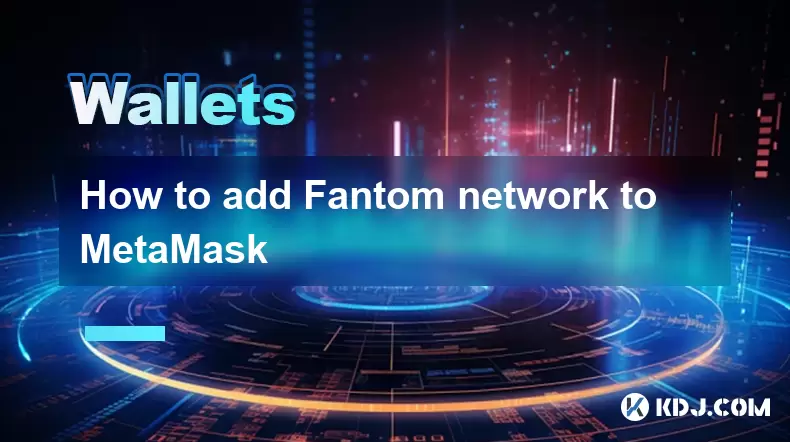
How to add Fantom network to MetaMask
Aug 07,2025 at 08:21am
Understanding the Fantom Network and MetaMask IntegrationThe Fantom network is a high-performance, scalable, and secure blockchain platform designed f...
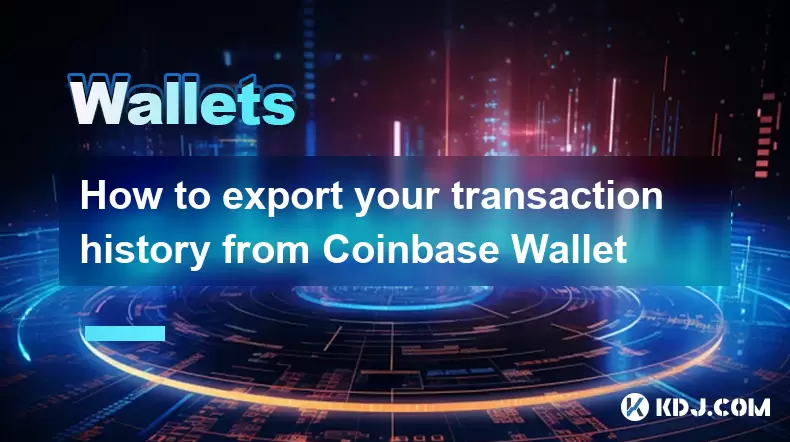
How to export your transaction history from Coinbase Wallet
Aug 07,2025 at 06:50am
Understanding Coinbase Wallet and Transaction HistoryCoinbase Wallet is a self-custodial cryptocurrency wallet that allows users to store, manage, and...
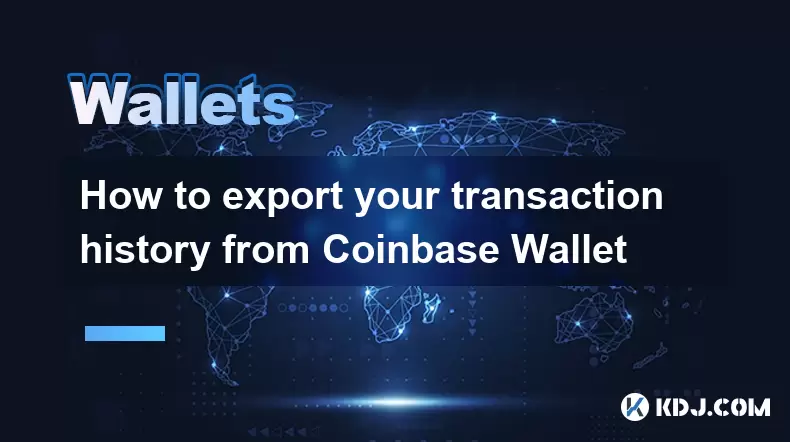
How to export your transaction history from Coinbase Wallet
Aug 07,2025 at 08:49am
Understanding Coinbase Wallet and Transaction HistoryCoinbase Wallet is a self-custodial cryptocurrency wallet that allows users to store, manage, and...
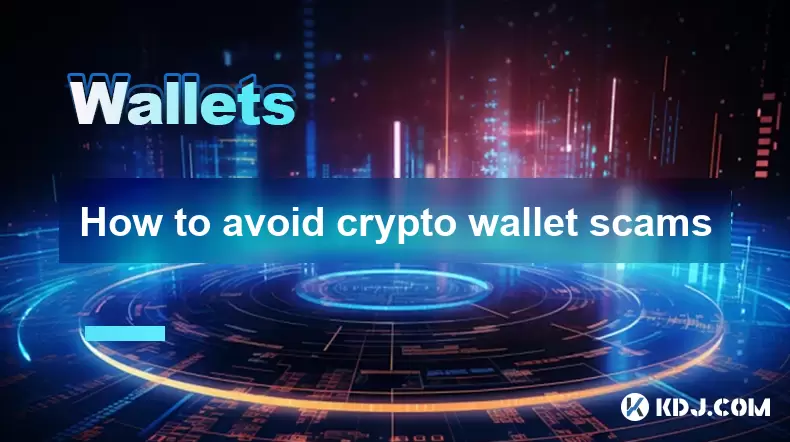
How to avoid crypto wallet scams
Aug 07,2025 at 02:21pm
Understanding Common Types of Crypto Wallet ScamsCrypto wallet scams come in various forms, each designed to exploit user trust, technical ignorance, ...
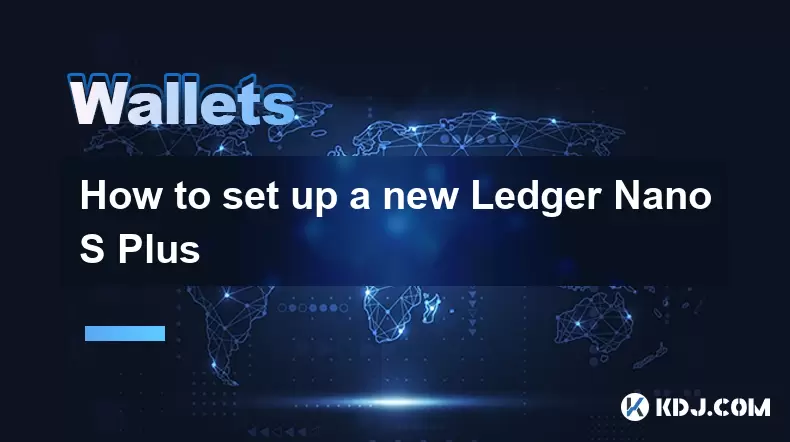
How to set up a new Ledger Nano S Plus
Aug 07,2025 at 06:01am
Unboxing and Initial InspectionWhen you receive your Ledger Nano S Plus, begin by carefully unboxing the package. Inside, you should find the Ledger N...
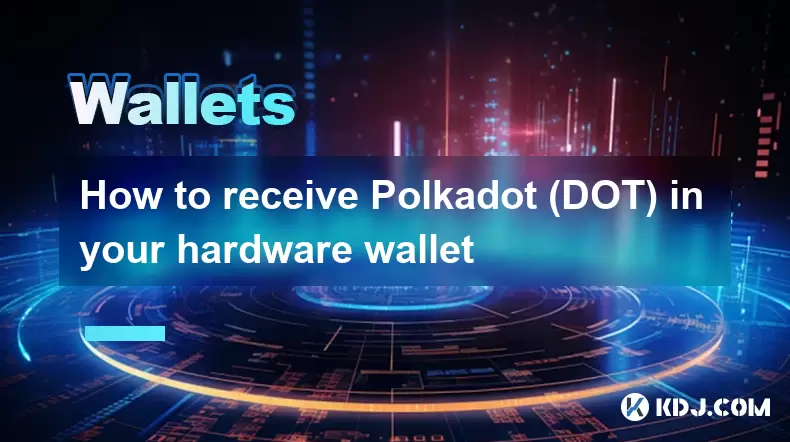
How to receive Polkadot (DOT) in your hardware wallet
Aug 07,2025 at 07:03am
Understanding Polkadot (DOT) and Hardware Wallet CompatibilityReceiving Polkadot (DOT) into a hardware wallet begins with understanding the ecosystem ...

How to add Fantom network to MetaMask
Aug 07,2025 at 08:21am
Understanding the Fantom Network and MetaMask IntegrationThe Fantom network is a high-performance, scalable, and secure blockchain platform designed f...

How to export your transaction history from Coinbase Wallet
Aug 07,2025 at 06:50am
Understanding Coinbase Wallet and Transaction HistoryCoinbase Wallet is a self-custodial cryptocurrency wallet that allows users to store, manage, and...

How to export your transaction history from Coinbase Wallet
Aug 07,2025 at 08:49am
Understanding Coinbase Wallet and Transaction HistoryCoinbase Wallet is a self-custodial cryptocurrency wallet that allows users to store, manage, and...

How to avoid crypto wallet scams
Aug 07,2025 at 02:21pm
Understanding Common Types of Crypto Wallet ScamsCrypto wallet scams come in various forms, each designed to exploit user trust, technical ignorance, ...

How to set up a new Ledger Nano S Plus
Aug 07,2025 at 06:01am
Unboxing and Initial InspectionWhen you receive your Ledger Nano S Plus, begin by carefully unboxing the package. Inside, you should find the Ledger N...

How to receive Polkadot (DOT) in your hardware wallet
Aug 07,2025 at 07:03am
Understanding Polkadot (DOT) and Hardware Wallet CompatibilityReceiving Polkadot (DOT) into a hardware wallet begins with understanding the ecosystem ...
See all articles

























































































